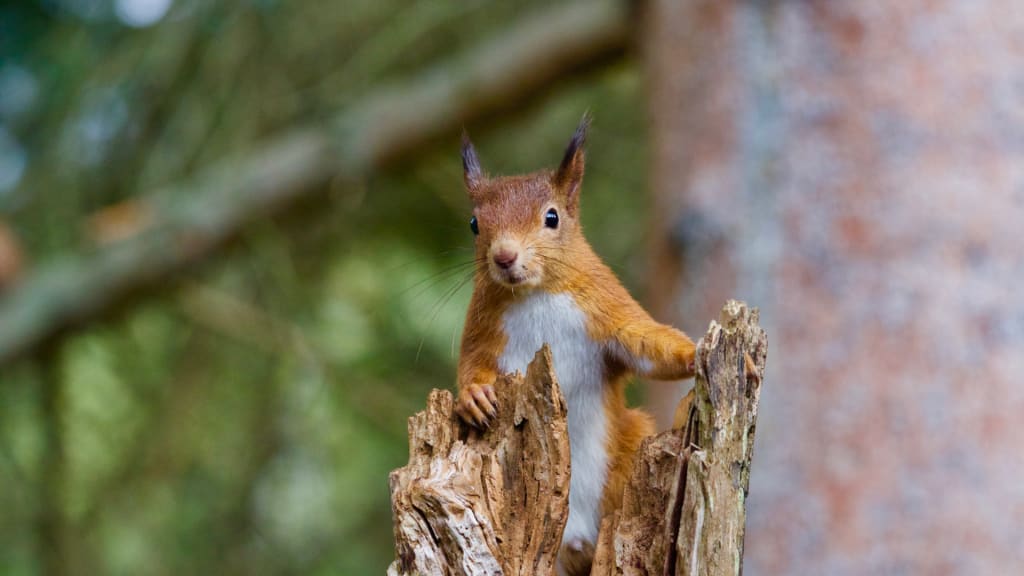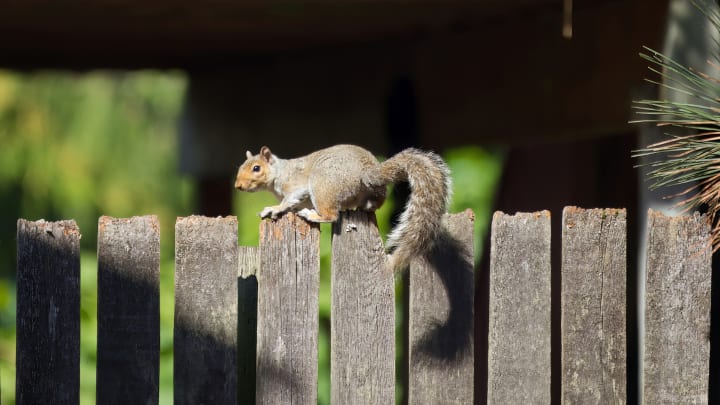Squirrel Communication: Understanding Their Chatter and Body Language
Let's learn what they wanna say...

Squirrels are among the most common and captivating wildlife species seen in urban and suburban areas. Their acrobatic abilities, bushy tails, and curious nature make them a delightful sight. However, there's more to these creatures than meets the eye. Squirrels have a complex system of communication, using both vocalizations and body language to convey messages.
In this article, we'll delve into the fascinating world of squirrel communication, providing insights that will help you better understand these lively animals.
Additionally, we'll touch on how ultrasonic repellers can effectively manage squirrel activity in your garden and attic by disrupting their communication.
The Basics of Squirrel Communication
Vocalizations
Squirrels are highly vocal animals, using a variety of sounds to communicate different messages. Their vocal repertoire includes:
Chirps and Twitters: These high-pitched sounds are often heard when squirrels are excited or agitated. They can be a way to alert other squirrels of potential danger or to express annoyance.
Quaas: This sound resembles a loud, nasal "quaa" and is typically used by squirrels to signal a threat from a predator, such as a hawk or cat. It's a form of alarm call that helps to warn other squirrels in the vicinity.
Muk-Muk: This soft, purring sound is used during mating season by male squirrels to communicate with females. It's a gentle call meant to attract a mate.
Barks and Screams: When squirrels are in distress or involved in a confrontation, they emit louder, more intense sounds like barks and screams. These are meant to scare off intruders or signal extreme danger.
Body Language
In addition to vocalizations, squirrels use body language to communicate. Observing their physical behaviors can reveal a lot about what they're trying to convey:
Tail Flicking: A squirrel flicking its tail rapidly is likely agitated or feeling threatened. This motion serves as a visual signal to other squirrels that something is amiss.
Stomping Feet: When a squirrel stomps its feet, it is usually a sign of aggression or a warning to other squirrels. This behavior often accompanies vocalizations to reinforce the message.
Ear Positioning: The position of a squirrel's ears can indicate its mood. Ears that are laid back might suggest fear or submission, while ears that are upright signal alertness or curiosity.
Posture: A squirrel's overall posture can also provide clues about its intentions. A relaxed, comfortable squirrel will have a more casual, loose stance, while a tense or alert squirrel will be more rigid and upright.

The Role of Communication in Squirrel Society
Territory and Hierarchy
Squirrels are territorial animals. They use communication to establish and maintain territories, especially during breeding season. Vocalizations and scent markings play a crucial role in defining boundaries and asserting dominance.
Dominant squirrels often use vocal displays and physical posturing to deter intruders and maintain their status within a community.
Mating Rituals
During mating season, communication becomes even more critical. Males use a combination of vocal calls and body language to attract females and ward off rival males.
The aforementioned "muk-muk" call is particularly significant in this context, as it helps males convey their intentions without alarming the females.
Alarm Systems
Squirrels rely heavily on alarm calls to alert each other of predators. The "quaa" and other distress signals are essential for the survival of the group.
When one squirrel senses danger, its immediate response is to communicate the threat, enabling others to seek safety.
Human Interaction and Challenges
As humans encroach on natural habitats, squirrels have adapted to living in close proximity to us. This adaptation brings about challenges, especially when squirrels invade gardens and attics, causing damage and posing health risks.
Understanding their communication can aid in managing these interactions more effectively.
Ultrasonic Repellers: Disrupting Squirrel Communication
For homeowners dealing with squirrel infestations, ultrasonic repellers offer a humane and effective solution. These devices emit high-frequency sounds that are disruptive to squirrels' communication.
Here's how they work:
Disruption of Vocal Signals: Ultrasonic repellers produce sounds that interfere with the frequency range squirrels use for communication. This disruption causes confusion and discomfort, making the area less attractive to them.
Behavioral Changes: When squirrels cannot effectively communicate due to the ultrasonic interference, they are less likely to feel safe and secure. This uncertainty often leads them to relocate to areas where their communication remains uninterrupted.
Preventing Entry: By strategically placing ultrasonic repellers in gardens and attics, homeowners can create a barrier that deters squirrels from entering and settling in these spaces.
For effective outdoor squirrel control, consider using the Garden Squirrel Repeller. This device can be placed around your garden to keep squirrels at bay without harming them.
For indoor control, especially in attics where squirrels often seek shelter, the Attic Squirrel Repeller is an excellent choice. Both products utilize ultrasonic technology to create an environment that squirrels find uninviting.
Conclusion
Understanding squirrel communication is not only fascinating but also practical for managing interactions with these clever creatures. Their vocalizations and body language reveal a lot about their behavior and social structures.
By using humane methods like ultrasonic repellers, we can effectively manage squirrel activity in our gardens and homes, ensuring a peaceful coexistence.
The next time you observe a squirrel chattering or flicking its tail, you'll have a better grasp of what it's trying to communicate. And if you're dealing with unwanted squirrel guests, ultrasonic repellers provide a modern solution that respects the intelligence and complexity of these remarkable animals.
About the Creator
Enjoyed the story? Support the Creator.
Subscribe for free to receive all their stories in your feed. You could also pledge your support or give them a one-off tip, letting them know you appreciate their work.






Comments
There are no comments for this story
Be the first to respond and start the conversation.